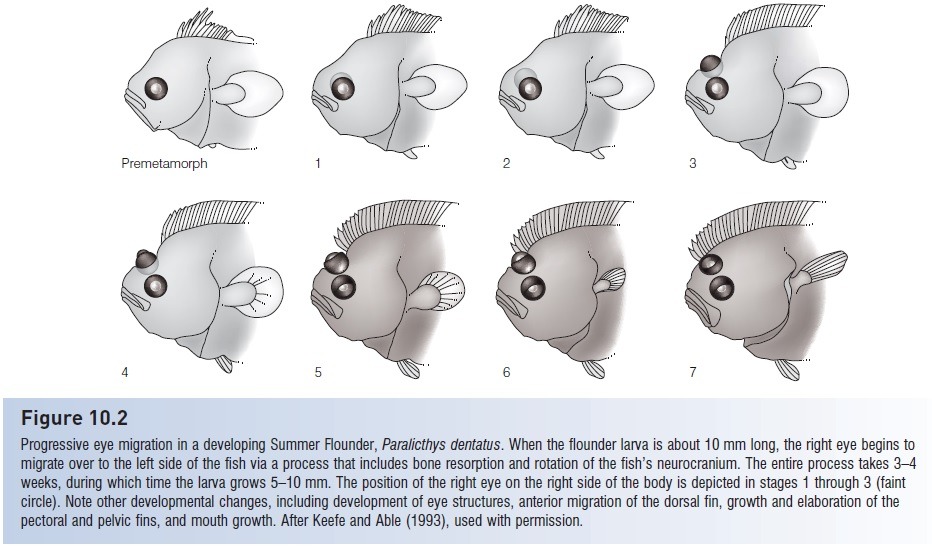Modern flatfish are characterized by their highly asymmetrical skulls, with both eyes positioned on just one side of their head. They aren’t actually born this way, but instead they undergo “eye migration” as juveniles, twisting up their skulls to bring one eye across the top of the head.

From Helfman et al (2009). The diversity of fishes. 2nd ed., Wiley-Blackwell.
This bizarre arrangement is the result of flatfish adapting to life laying flat on the seafloor, but instead of slowly widening and flattening themselves out they took an evolutionary “shortcut” by simply tipping their tall narrow bodies over onto one side. Initially this would have left one of their eyes unusable, but random mutations causing slightly asymmetrical skulls would have rapidly become highly advantageous to the earliest members of this lineage – and over time they just got wonkier and wonkier.
We’ve even found fossils of early flatfish in the “halfway there” stage of their evolution!
Amphistium paradoxum lived in what is now northern Italy during the Eocene, around 50-48 million years ago. About 20cm long (~8″), it had one eye partially migrated towards the top of its head, but not all the way around yet, showing a transitional state between its bilaterally symmetric ancestors and its more twisted-skulled modern relatives.
Unlike most modern flatfish Amphistium came in both “right-eyed” and “left-eyed” forms in equal numbers, suggesting that a genetic preference for a specific side also hadn’t developed yet.

